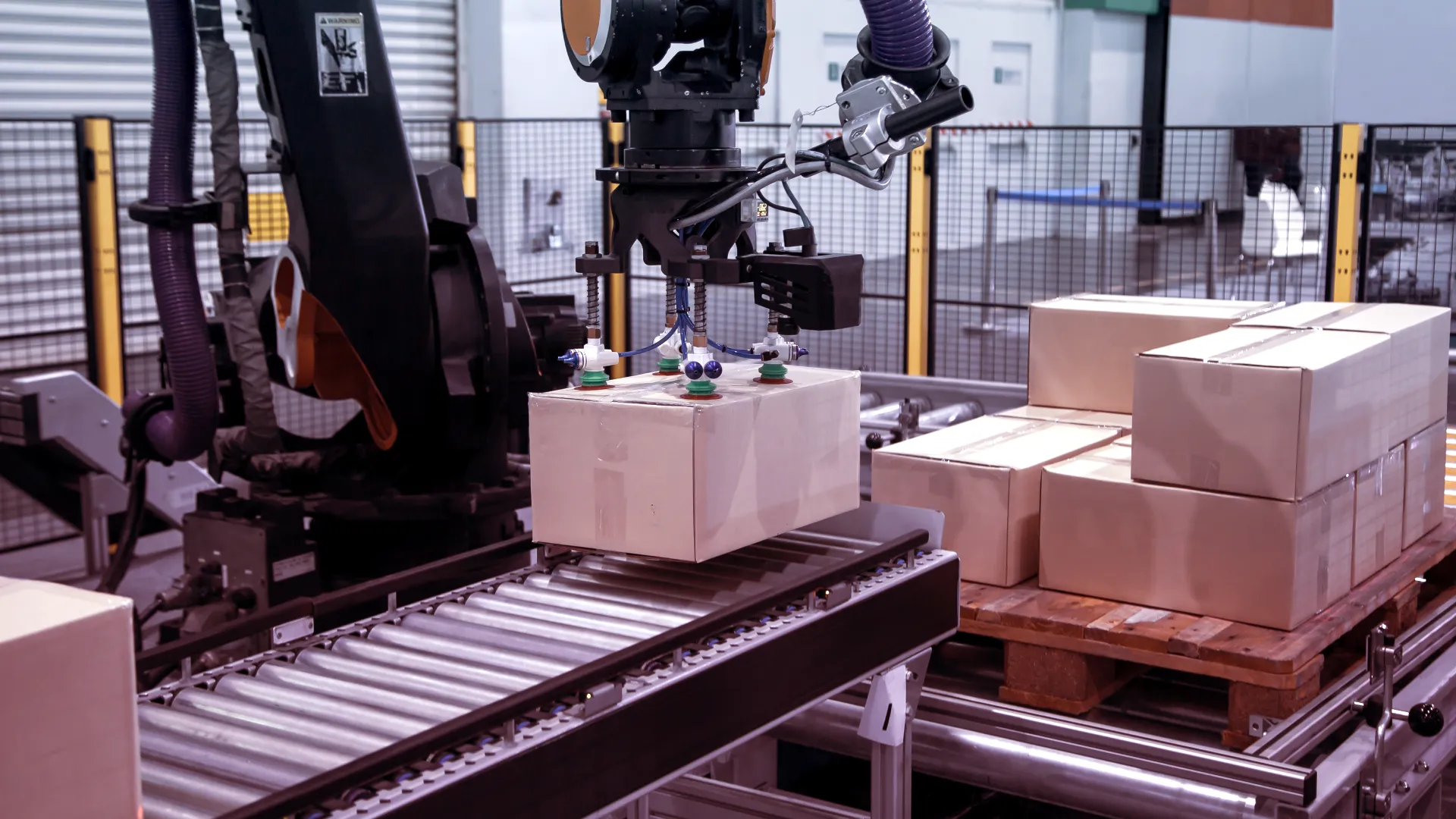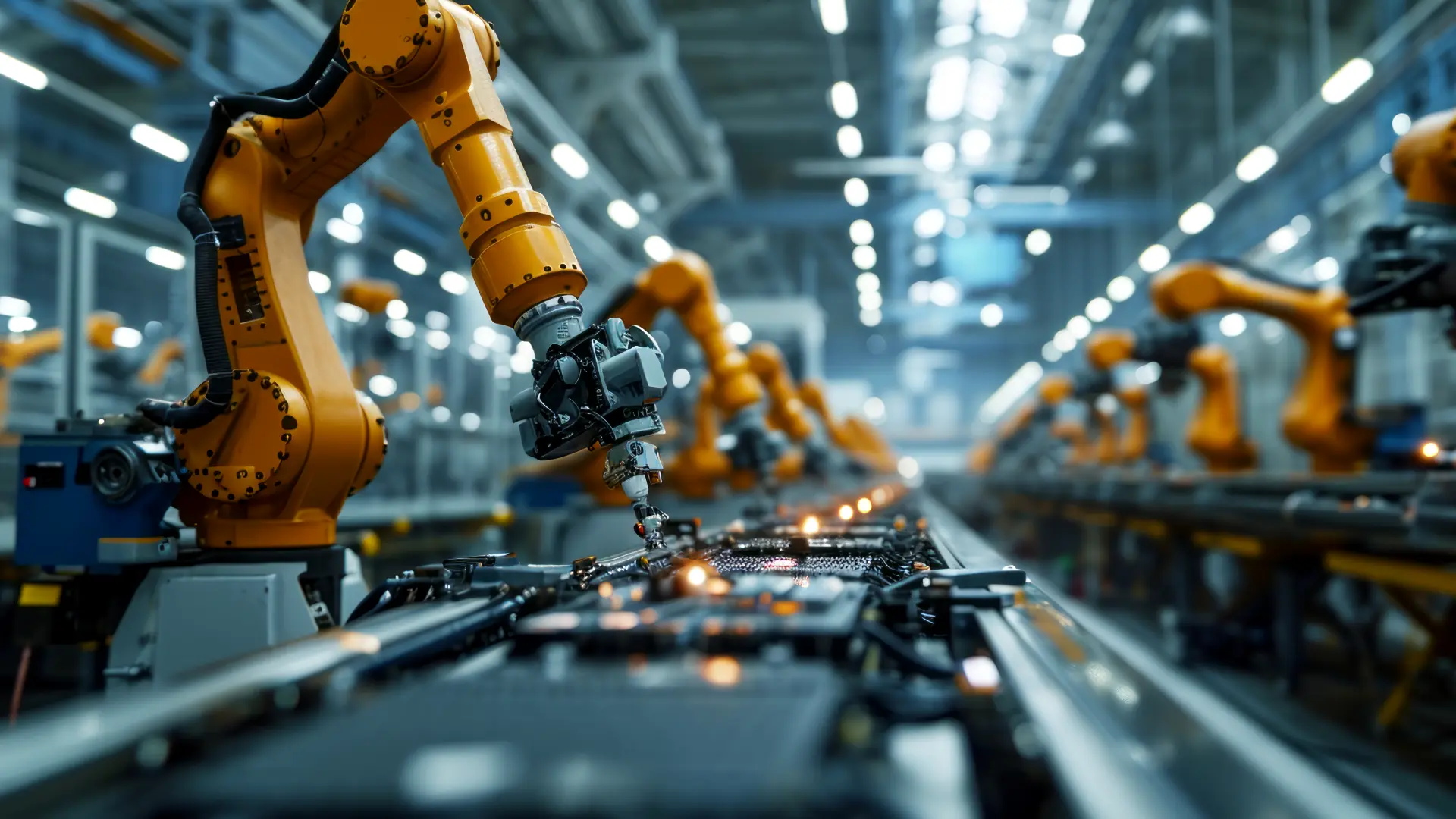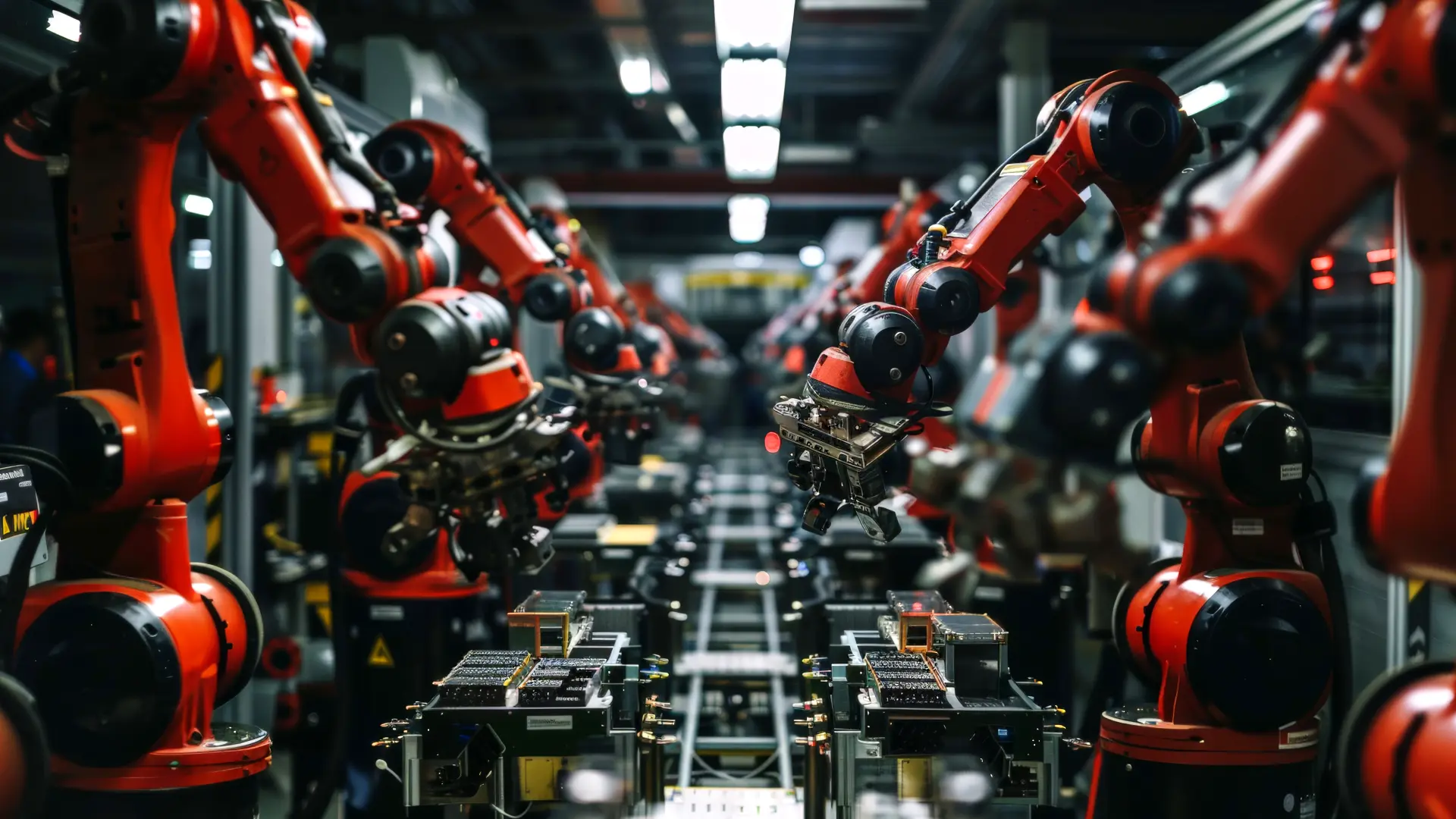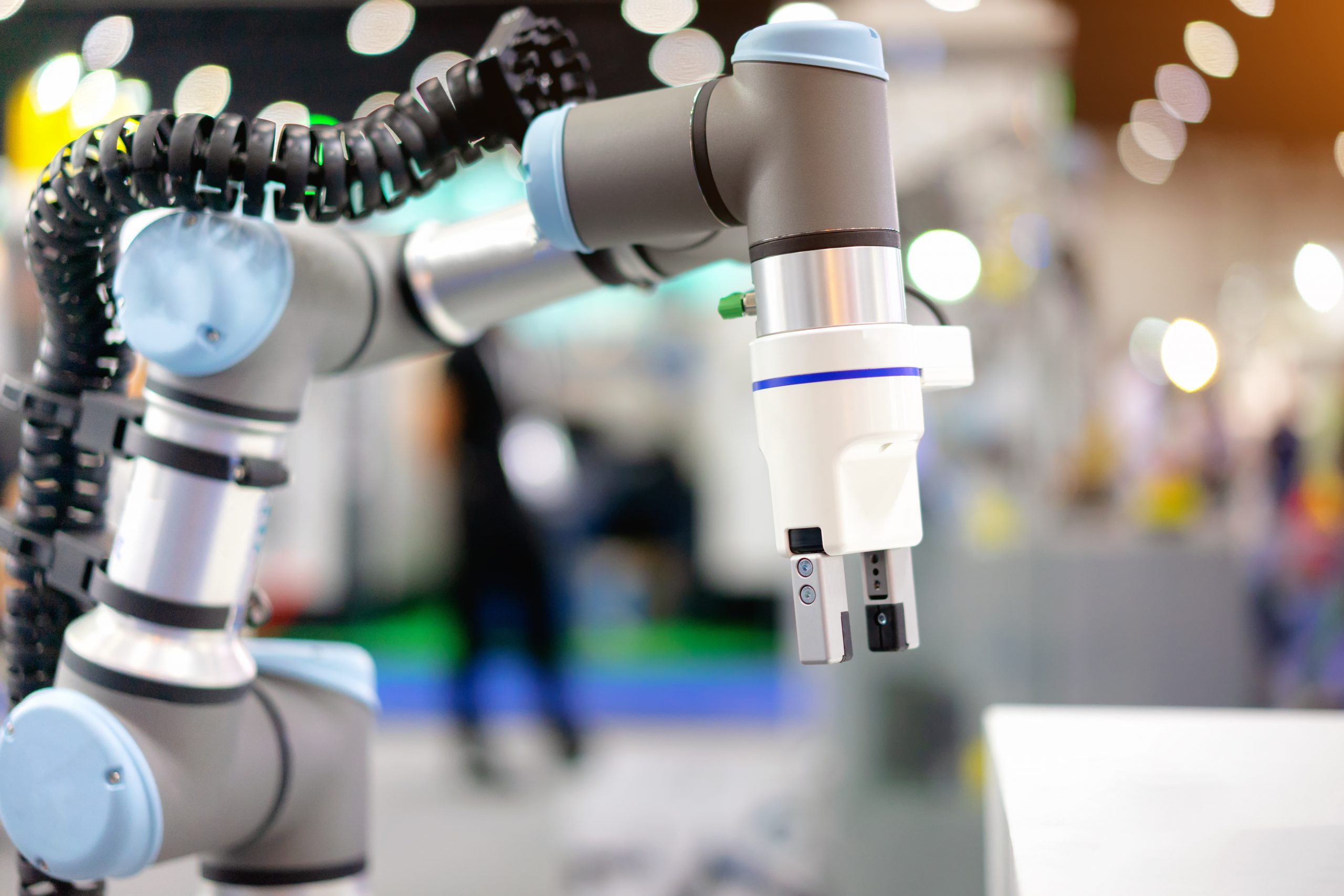What Is Warehouse Robotics?
Warehouse robotics represents a revolutionary shift in how warehouse operations are conducted. At its core, this technology encompasses various automated systems designed for inventory management, product handling, and a myriad of other tasks traditionally performed by human workers.
The primary objective is to streamline operations, enhance efficiency, and minimise human error.
The advent of warehouse robotics has been a game-changer in the logistics industry. These robotics, ranging from automated guided vehicles to sophisticated retrieval systems, have redefined the landscape of warehouse operations.
Their ability to seamlessly integrate into existing warehouse management systems has made them an indispensable asset.
But what exactly makes these automated warehouse robots so compelling? The answer lies in their versatility and precision. Equipped with cutting-edge technology, these robots can navigate through large warehouses, perform tasks such as picking and sorting with unprecedented accuracy, and operate continuously without the constraints of human fatigue. This technological leap has improved operational efficiency and opened new avenues for innovation in warehouse management.
Are Warehouse Robotics Popular?
The popularity of warehouse robots is soaring, primarily due to their effectiveness in boosting productivity and reducing operational costs.
In recent years, the demand for warehouse automation solutions has skyrocketed, as more companies recognise the value they bring to warehouse operations. This trend is particularly evident in industries where speed and accuracy are paramount.
The adoption of warehouse robotics is not just about keeping pace with technological advancements; it’s a strategic move towards future-proofing business operations.
By integrating robotic systems, companies can handle larger volumes of goods with greater precision, thus enhancing their competitiveness in the market.
Moreover, the integration of warehouse robots has had a significant impact on human workers. Far from replacing human labour, these robots have augmented the workforce, taking over repetitive and physically demanding tasks.
This synergy between humans and machines has led to a more dynamic and efficient working environment, where human workers can focus on more complex and value-added activities. Another reason they are popular is because in some sectors they can complete repetitive and dangerous tasks.
The Different Types Of Warehouse Robots
When discussing the types of warehouse robots, we delve into a diverse spectrum of automated solutions. Each type is uniquely designed to cater to specific needs within the warehouse environment. Among the most prevalent are automated guided vehicles (AGVs), which transport goods across the warehouse floor. These vehicles follow predefined paths and are integral to maintaining a smooth flow of goods.
Another key type of warehouse robot is the automated storage and retrieval system (AS/RS). These systems are pivotal in maximising storage density and improving the retrieval process. They operate in tightly configured spaces, retrieving and placing goods with remarkable precision, thereby enhancing the overall efficiency of warehouse operations.
Additionally, robotic picking systems have become increasingly popular. These systems revolutionise the picking process using advanced algorithms and machine learning to identify, pick, and sort products at a speed and accuracy far beyond human capabilities. This automation not only speeds up the process but also significantly reduces errors, ensuring a higher degree of reliability in order fulfilment.
Most Common Industries They Are Used In
Warehouse robotics has found its way into a multitude of industries, each benefiting from its efficiency and precision with warehouse automation.
The e-commerce sector, in particular, has seen a significant transformation with the adoption of warehouse automation. In this fast-paced industry, speed and accuracy in order fulfilment are crucial, and warehouse robots play a pivotal role in achieving these objectives.
The manufacturing sector is another major adopter of warehouse robotics. In this context, the robots are instrumental in managing inventory, supplying production lines with materials, and handling finished products. Integrating robotics into warehouse operations enhances the overall efficiency of the manufacturing process.
Furthermore, the pharmaceutical industry has also embraced warehouse robotics, especially in inventory management and handling sensitive materials. The precision and consistency offered by these robotic systems are essential in maintaining the stringent quality control required in pharmaceuticals.
Benefits For Your Warehouse
The benefits of incorporating warehouse robotics into your logistics operations are multifaceted. Firstly, these systems significantly enhance efficiency by automating tasks such as picking, sorting, and transporting goods. This automation translates into faster processing times and a higher throughput, which is crucial in today’s fast-paced market environment.
Another key benefit is the reduction in operational costs. Warehouse robots operate with a high degree of precision and consistency, minimising errors that can lead to product damage or loss. Additionally, by automating repetitive tasks, these systems reduce the physical strain on human operators, potentially lowering health-related costs and desertion. One day, they could even cut labour costs completely!
Moreover, warehouse robotics brings about a marked improvement in inventory management. With advanced tracking and handling capabilities, these systems ensure that inventory is accurately accounted for and easily accessible.
This level of organisation is critical in maintaining an efficient operation and meeting customer expectations in terms of order accuracy and delivery times. Also with the ability to connect to your warehouse management software.
How Do Warehouse Robotics Work?
The functioning of warehouse robots is grounded in a combination of automation technologies. At the heart of these systems are sophisticated algorithms that enable the robots to navigate the warehouse environment, identify items, and perform tasks with high accuracy. These algorithms are continually refined through machine learning, allowing the robots to adapt to new challenges and improve their performance over time.
In addition to software, the hardware components of warehouse robots are equally important. Sensors, cameras, and other detection systems allow the robots to perceive their surroundings, avoid obstacles, and interact safely with human workers and other objects in the warehouse. This integration of hardware and software is key to the versatility and effectiveness of warehouse robotics.
Moreover, the communication between warehouse robots and the central warehouse management systems is crucial. This connectivity ensures that the robots are operating in sync with the overall warehouse operations, receiving real-time updates on tasks, and contributing to a seamless workflow.
The History Of Warehouse Robotics
The history of warehouse robotics is a testament to the rapid advancement of technology in the logistics sector. The journey began with simple mechanised systems designed to aid in basic tasks and has evolved into the highly sophisticated automated solutions we see today. This evolution has been driven by the growing demands of the global market and the need for more efficient and cost-effective logistics operations.
The first significant leap in warehouse robotics came with the introduction of automated guided vehicles in the late 20th century. These early AGVs laid the groundwork for further innovations, demonstrating the potential of automation in warehouse environments. Since then, the technology has advanced in leaps and bounds, with each generation of robots becoming more intelligent, flexible, and capable.
Today, warehouse robotics encompasses a wide array of technologies, including AI, machine learning, and advanced sensor systems. These technologies have transformed warehouse operations, making them more efficient, scalable, and adaptable to changing market demands.
FAQs
- How do warehouse robots improve efficiency? Warehouse robots improve efficiency by automating repetitive tasks, reducing error rates, and operating continuously without breaks, thus increasing overall productivity.
- Can warehouse robots work alongside human workers? Yes, many warehouse robotic systems are designed to work in collaboration with human workers, taking over mundane tasks and allowing humans to focus on more complex operations.
- Are warehouse robots expensive to implement? The initial investment in warehouse robotics can be significant, but it is often offset by long-term savings in operational costs and increased efficiency.
Conclusion
The integration of warehouse robotics into modern logistics and supply chain operations marks a pivotal transformation in the industry. These sophisticated systems, embodying the pinnacle of technological advancement, offer a multitude of benefits that extend far beyond simple automation. They represent a harmonious blend of efficiency, accuracy, and innovation, reshaping the landscape of warehouse operations.
One of the most significant advantages of warehouse robotics is the substantial increase in operational efficiency. These systems enable warehouses to handle larger volumes of goods with greater precision and at a faster pace, thereby significantly enhancing throughput.
This increase in productivity is not just a matter of doing things faster; it’s about doing them smarter than warehouse operators. With the aid of advanced algorithms and machine learning, warehouse robots continuously evolve, adapting to new challenges and optimising their performance.
Get in touch with us today for more information.






